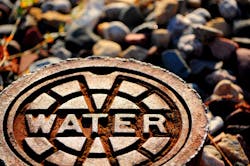EPA Happenings: Infrastructure research and environmental workforce development
Institutions receive nearly $4M for water infrastructure research
DENVER — May 14, 2016 — The U.S. Environmental Protection Agency (EPA) awarded $1.95 million to the Colorado School of Mines and $1.9 million to the Water Environment and Reuse Foundation (WERF) in Alexandria, Virginia, to research technologies to manage stormwater runoff and combined sewer overflows.
The Colorado School of Mines will help communities evaluate alternative stormwater treatment technologies through the development of a decision support tool. The resource will consider risks and life cycle costs. The institution will also hold training sessions for the tools.
WERF’s goal is to develop a tool and database that is accessible to the public, a guide for decision makers and a life cycle cost and analysis framework.
High school student’s clean drinking water project earns EPA award
WASHINGTON — May 13, 2016 — The EPA awarded its Patrick H. Hurd Sustainability Award to Alexis D’Alessandro for her project that provides affordable drinking water to a Kenyan community.
D’Alessandro is a senior of Half Hollow Hills High School in Dix Hills, New York. Her project, titled "Design and Implementation of a Sustainable Permeate Gap Membrane Distillation System for Water Purification in the Turkana Basin of Kenya," includes a cost-effective treatment alternative to reverse osmosis.
The project will be displayed in the spring of 2017 at the EPA’s National Sustainable Design Expo in Washington, D.C.
EPA funds support environmental workforce development
SAN FRANCISCO — May 12, 2016 — Eighteen Environmental Workforce Development and Job Training (EWDJT) grants worth $200,000 each will support local economies across the nation.
The projects will provide environmental training to unemployed and economically disadvantaged residents:
- Cypress Mandela Training Center, Oakland
- Future Build, Pittsburg
- Hunters Point Family, San Francisco
- Los Angeles Conservation Corps, Los Angeles
- Nye County, Tonopah, Nevada
- Civic Works, Inc., Baltimore, Maryland
- City of Rochester, Rochester, New York
- Limitless Vistas, Inc., New Orleans, Lousiana
- Energy Coordinating Agency, Philadelphia, Pennsylvania
- Redevelopment Authority of Cumberland County, Carlisle, Pennsylvania
- Auberle, McKeesport, Pennsylvania
- Northwest Regional Workforce Investment Board, Waterbury, Connecticut
- City of Tacoma, Tacoma, Washington
- City of Glens Falls, Glens Falls, New York
- City of Springfield, Springfield, Montana
- Lawson State Community College, Birmingham, Alabama
- Alaska Forum, Inc., Anchorage, Alaska
- Port Gamble S’Klallam Tribe, Kingston, Washington
The grants support programs affected by Bownfields sites in their communities. Residents can work by cleaning up the sites. Opportunities also exist in waste treatment, stormwater manager, emergency response, electronics recycling, solar installation and green remediation.
Study finds drop in nitrate load in the Illinois River
URBANA, Ill. — May 10, 2016 — Water quality in the Illinois River has improved, with a 10 percent decrease in the nitrate load in 2010 to 2014 compared with the average load in the 1980s and early 1990s, according to a new study from the University of Illinois.
The EPA set a goal of reducing the nitrate and phosphorus loads in the Mississippi River by 45 percent to help reduce the size of the seasonal hypoxic area, or “dead zone”, created in the Gulf of Mexico when nitrate in tributaries like the Illinois River flows into the Mississippi River and down to the Gulf.
The research was completed last October, before the release of data for 2015. The study was published in the Journal of Environmental Quality.
The authors also found that nitrate loads and concentrations in the Illinois River from 1983 to 2014 were correlated with more efficient agricultural nitrogen use and levels of nitrate discharged in Chicago’s treated wastewater.
EPA report highlights “poor health” of wetlands in the West
SAN FRANCISCO — May 11, 2016 — Around a third of wetlands across the U.S. are in poor health, according to the EPA’s first National Wetland Condition Assessment.
The report shows that nearly half of the nation’s wetlands are in good health, while 20 percent are classed as being in fair health and the remaining 32 percent are in poor health.
Overall, the ecoregion west of the Rocky Mountains scored lowest with just 21 percent of wetlands in this region in good condition, 18 percent in fair condition and 61 percent in poor condition.
Challenges facing western wetlands include hydrologic changes from the creation of ditches and other draining systems; intrusion of nonnative plants; and surface hardening and vegetation removal (such as for roads and pavement). Additional factors that may have led to the poorer results in the West include generally higher temperatures; long, dry summers; and prolonged drought conditions.
The assessment points to the need for better monitoring and protection of wetlands, the EPA said.
